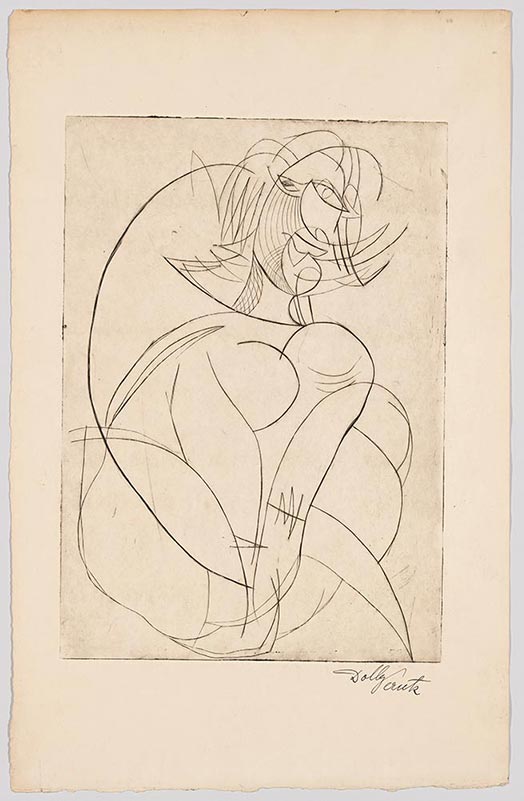71. Dolly Perutz
| Life Dates | 1908-1979 |
| Place of Birth | Prague, Bohemia, Austro-Hungarian Empire (now Czechia) |
| Place of Death | Great Neck, NY, USA |
| Birth Name | Dolly Hellmann |
Born in Prague, Dolly Hellmann had a privileged childhood in a wealthy family who operated a textile mill in Beroun.1 She was tutored at home and never formally attended school, though her brothers and sister all went on to earn advanced degrees. In 1933, she married Konstantin “Tino” Perutz, the son of the operator of an Austro-American steamship line, and the young couple lived a glamorous life in the years before the German invasion. Forced to flee Nazi persecution, Perutz and her husband came to New York in September 1938—first settling in Forest Hills and later Kew Gardens, Queens, both heavily populated by European refugees—and welcomed their only daughter Kathrin in 1939. It is not clear how or where Perutz began her artistic training, but she was a pupil of the eastern European sculptor Bernard Reder (1897-1963) during the mid-1940s.0 In addition to oil painting, she was actively producing prints during this decade, too. Although few of her works on paper are dated, it seems she started in the Germanic tradition of woodcut—a medium that Reder was also exploring in the 1940s—and eventually moved onto intaglio and lithography, the latter or which engaged her through the 1950s and 1960s. Perutz’s name appears in the Grippe student ledger book for March 1952 and April-May 1953, though it is possible she was affiliated with Atelier 17 earlier. Perutz maintained an elegant European lifestyle while in New York, and her group of friends included an international mix. Very likely, she gravitated to Atelier 17 for its highly global and cultured membership. Indeed, Doris Seidler, who was also at Atelier 17 in spring 1952, became a lifelong friend and eventually a neighbor once Perutz moved to Great Neck in 1955. Perutz turned her focus increasingly to sculpture in the late 1950s until her death and had frequent solo exhibitions in galleries in the United States and in Europe.2
Archives
Bernard Reder Collection, Museum of Sex, New York, NY (letters between Perutz and Reder).
Kathrin Perutz, New York.
Notes
- Thank you to the artist’s daughter, the novelist Kathy Perutz, for generously speaking to me about her mother on May 11, 2017. Unless otherwise cited, all biographical information comes from this conversation. ↩
- See exhibition chronology in Alice Bellony-Rewald, Dolly Perutz: The Last 25 Years of Her Work (New York: Bodley Gallery, 1981), 33. ↩

